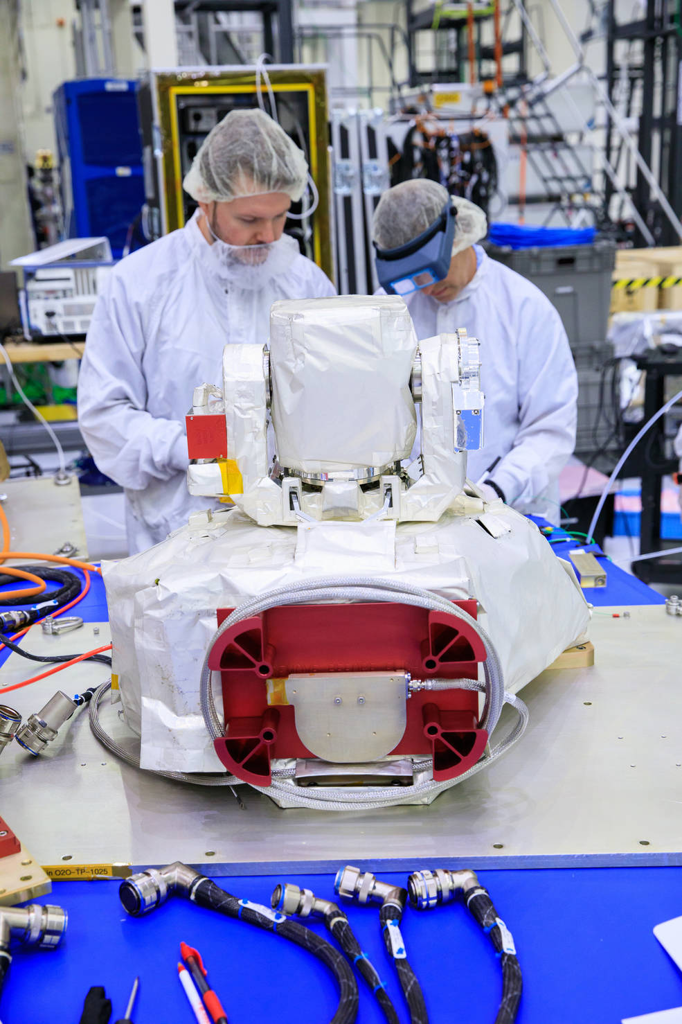Lasers on the Moon and beyond
Becky Bosco, Senior Director of Corporate Communications, Optica and Sammi Bradley, Digital Communications Coordinator, Optica
Humans will soon return to the Moon, accompanied by photonics technology that will enable communications capabilities unimagined 54 years ago during the first Moon landing. From the earliest days of laser development, researchers realized that beams of light could vastly outperform the information carrying capacity of RF and microwave radio transmission. Light wavelengths are very short compared to those of radio signals which is the key to transmitting optical signals at data rates beyond one terabit per second. Lasers have been used in data communications for decades, reading CDs and DVDs, scanning bar codes at checkout lines or launching signals into the fiber optic network which is the foundation of the internet. Now, free-space optical communications, where laser transmitter light is transmitted through open air or space, will be a cornerstone to upcoming space missions that have their eyes on the Moon and later, Mars.
NASA’s Artemis II manned mission to the Moon is set to launch at the end of 2024. NASA and industry collaborators are sending a next-generation communications system to the Moon to link the crewed Orion spacecraft with mission control on Earth. Known as the Orion Artemis II Optical Communications System (O2O), the system will operate at 260 megabits-per-second, capable of providing multiple streams of 4K resolution video from the Moon to Earth and supporting an array of mission-critical messages. Before the Artemis mission, NASA used the radio systems of TDRSS (Tracking and Data Relay Satellite System) and DSN (Deep Space Network) to exchange data between Earth and mission spacecraft. As a laser communications system, O2O will sent terabyte-sized chunks of data in a single transmission, providing NASA and others a wealth of critical mission information. The light from Orion’s laser transmitters will be pointed at Earth and intercepted by ground-based stations where the received data will be forwarded to the mission centers.

The O2O payload in a Kennedy Space Center cleanroom.
Credits: NASA / Isaac Watson
“260 megabits-per-second may not sound like a lot in today’s terrestrial terabit-per-second world,” explained Randy Giles, former ISS National Lab Chief Scientist, and Optica Senior Science Advisor. “But considering the O2O optical link can be 400,000 kilometers long, passes through Earth’s turbulent atmosphere, and has no optical repeaters to re-amplify or refocus the optical beam along the way, 260 Mb/s is an impressive feat of engineering.”
“Components on board O2O include an optical module based around a 4-inch telescope and two gimbals that point the telescope toward ground terminals on Earth,” detailed Professor Daewook Kim, University of Arizona. “O2O will transmit and receive procedures, pictures, flight plans, and be a link between Orion and mission control on Earth. It’s an exciting time for our optical astronomy community.”
"At CACI, we are currently facilitating secure communications across a breadth of orbits and missions,” said Matthew Reichert, Optical Engineer, CACI. “Our American-made optical comms technology converts data to and from laser beams for communication onboard satellites for the Department of Defense and human spaceflight capsules, including NASA’s Artemis II. As the proven provider of low-risk, reliable optical communications technology, CACI has designed, manufactured, and tested the modem module of the O2O terminal to meet NASA’s rigorous performance, environmental, and safety standards. We are extremely proud to support NASA and to be a part of America’s return to the Moon.”
Some years after the lunar mission, another Orion Spacecraft will travel far beyond the Moon. In its lonely voyage through the vastness of deep space, optical data links spanning millions of kilometers, will connect the manned vessel to Earth to dramatically improve mission safety, crew morale, and the science platform. And with the aid of this photonics technology, these spacefarer’s first steps on Mars will be the greatest show on Earth—ever.
